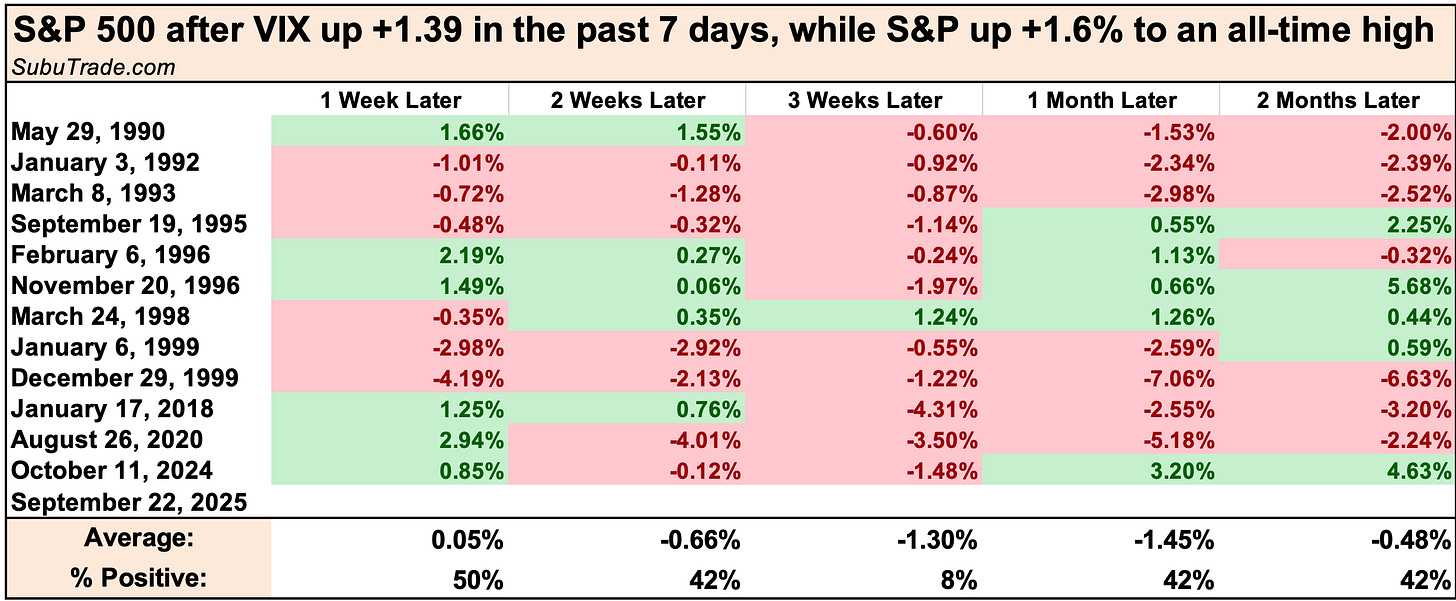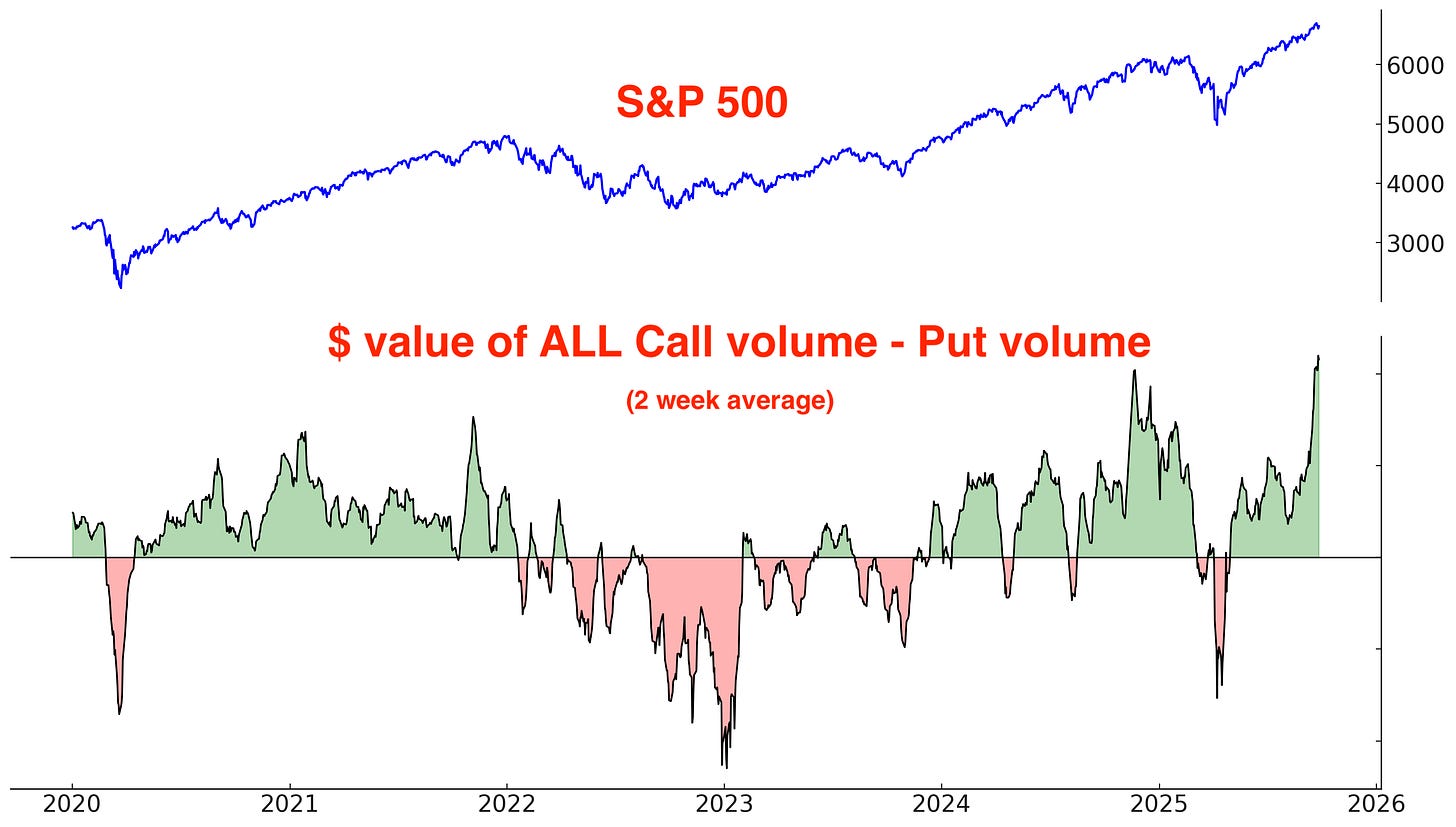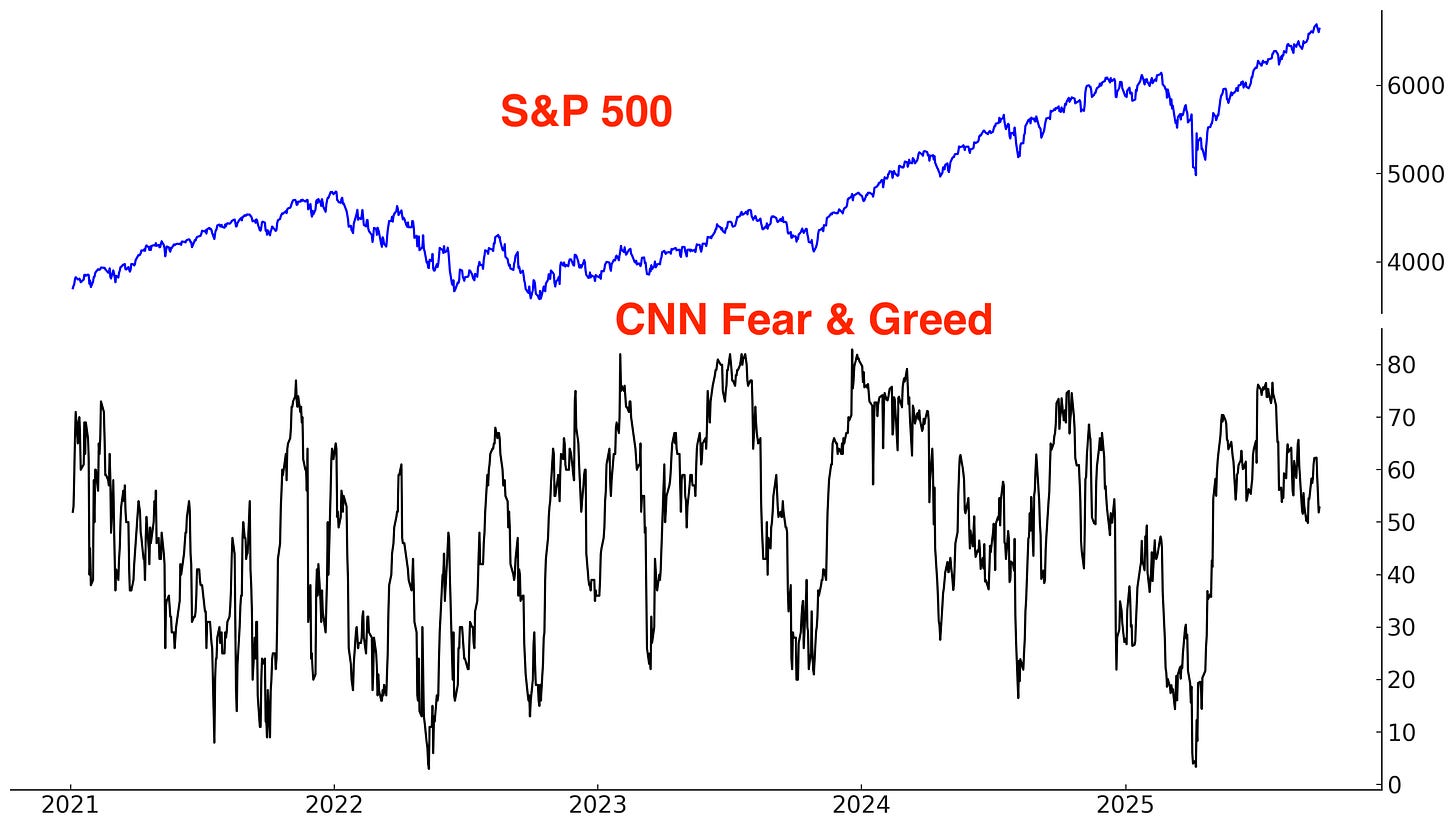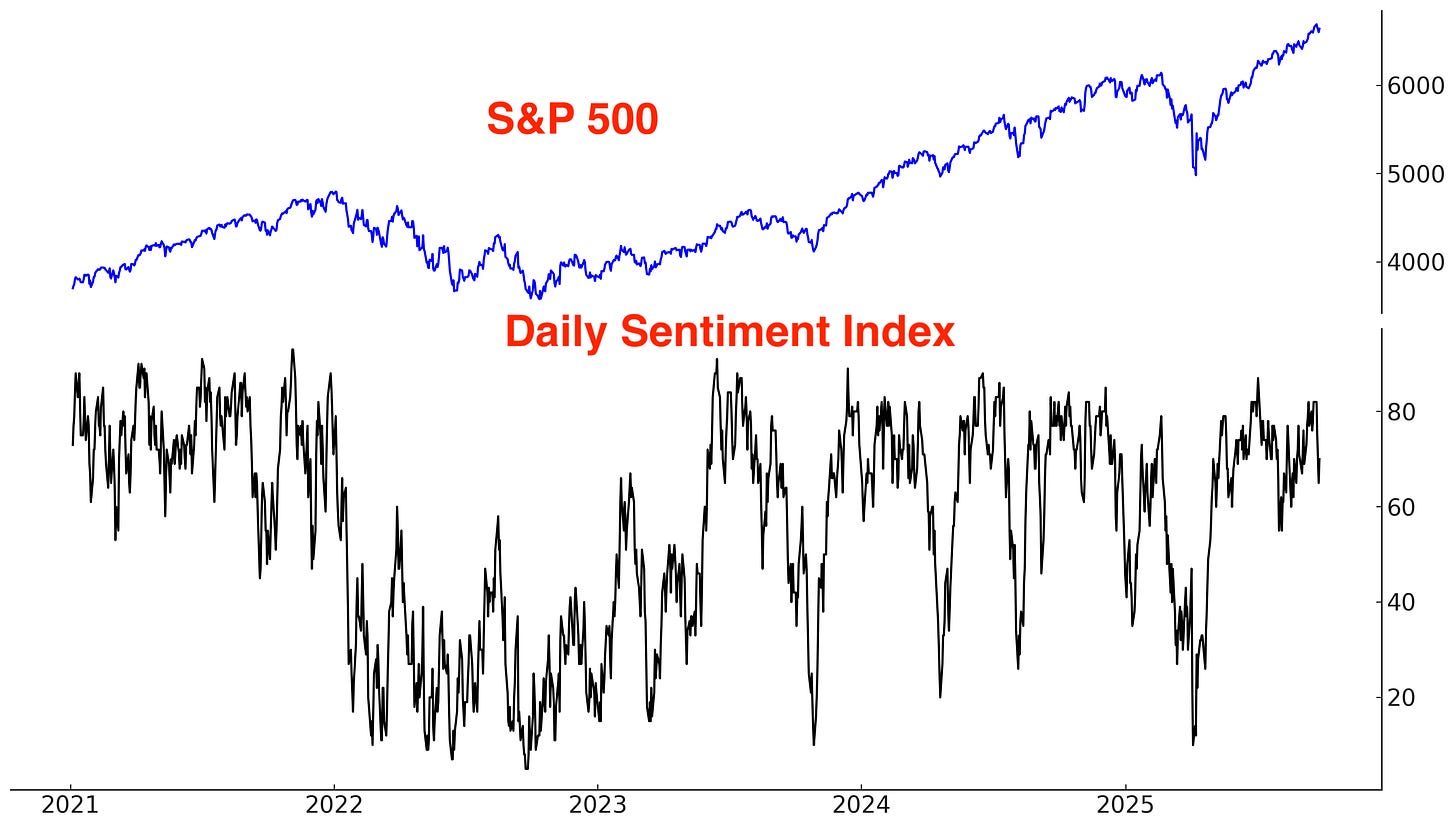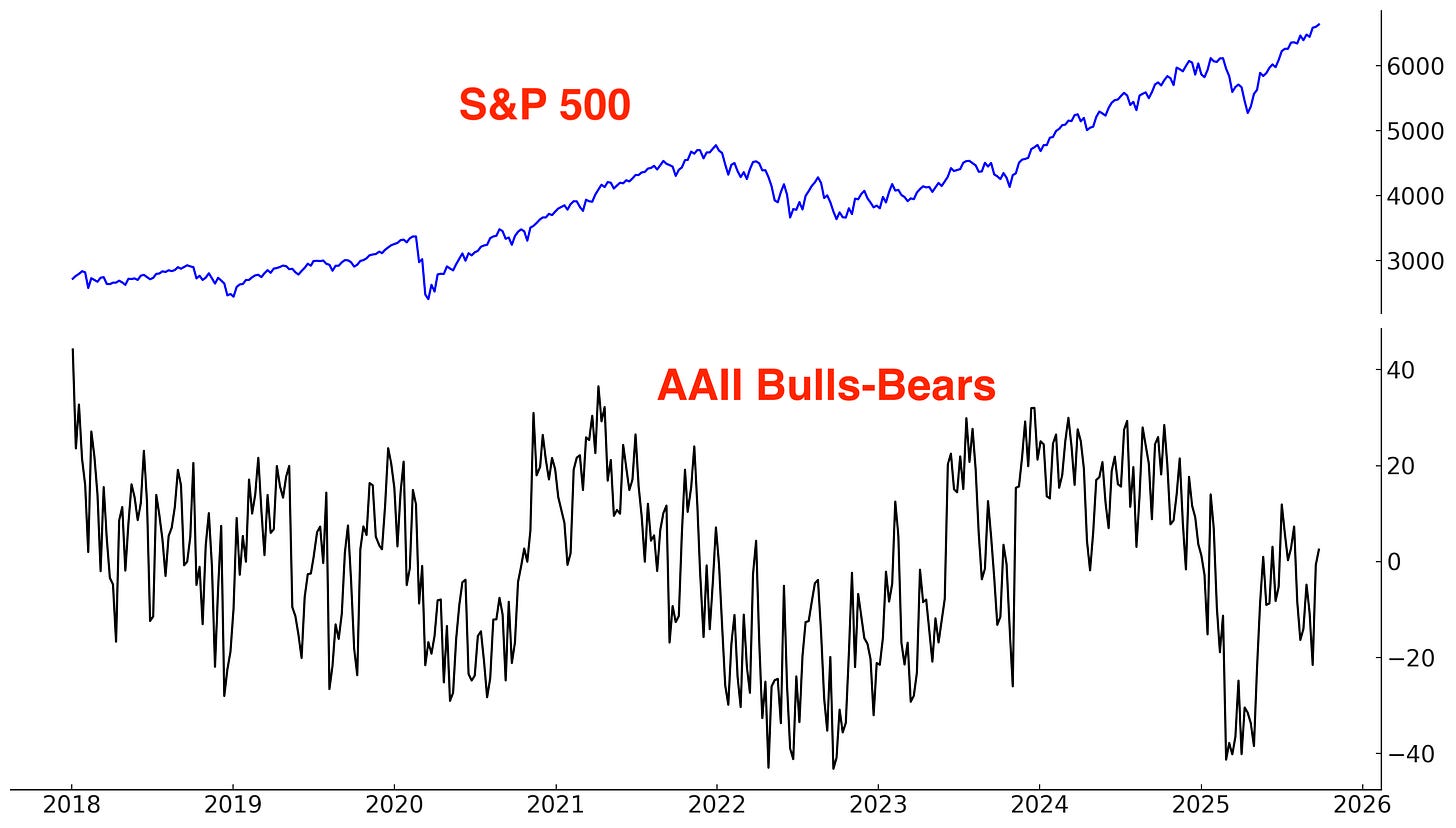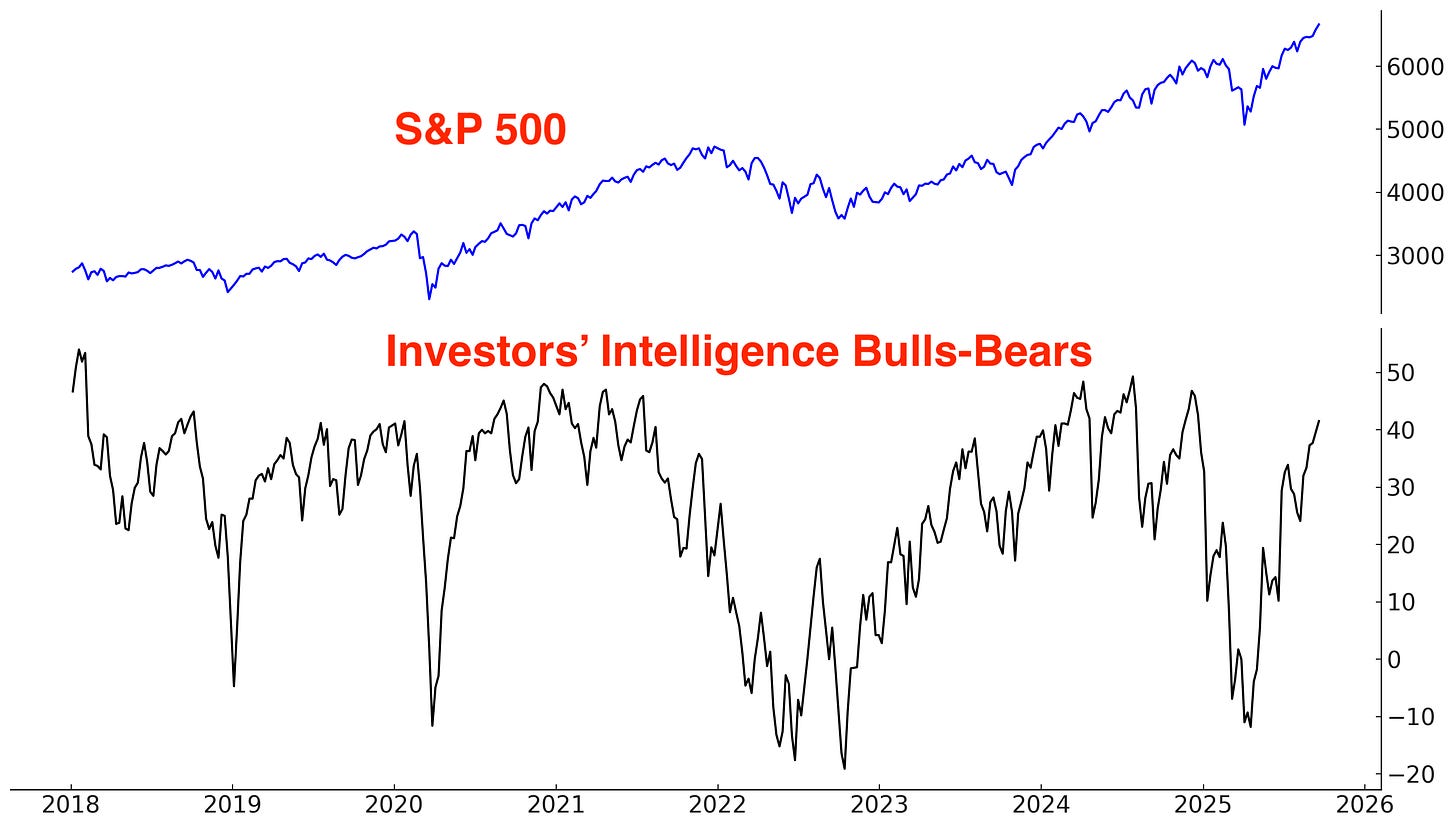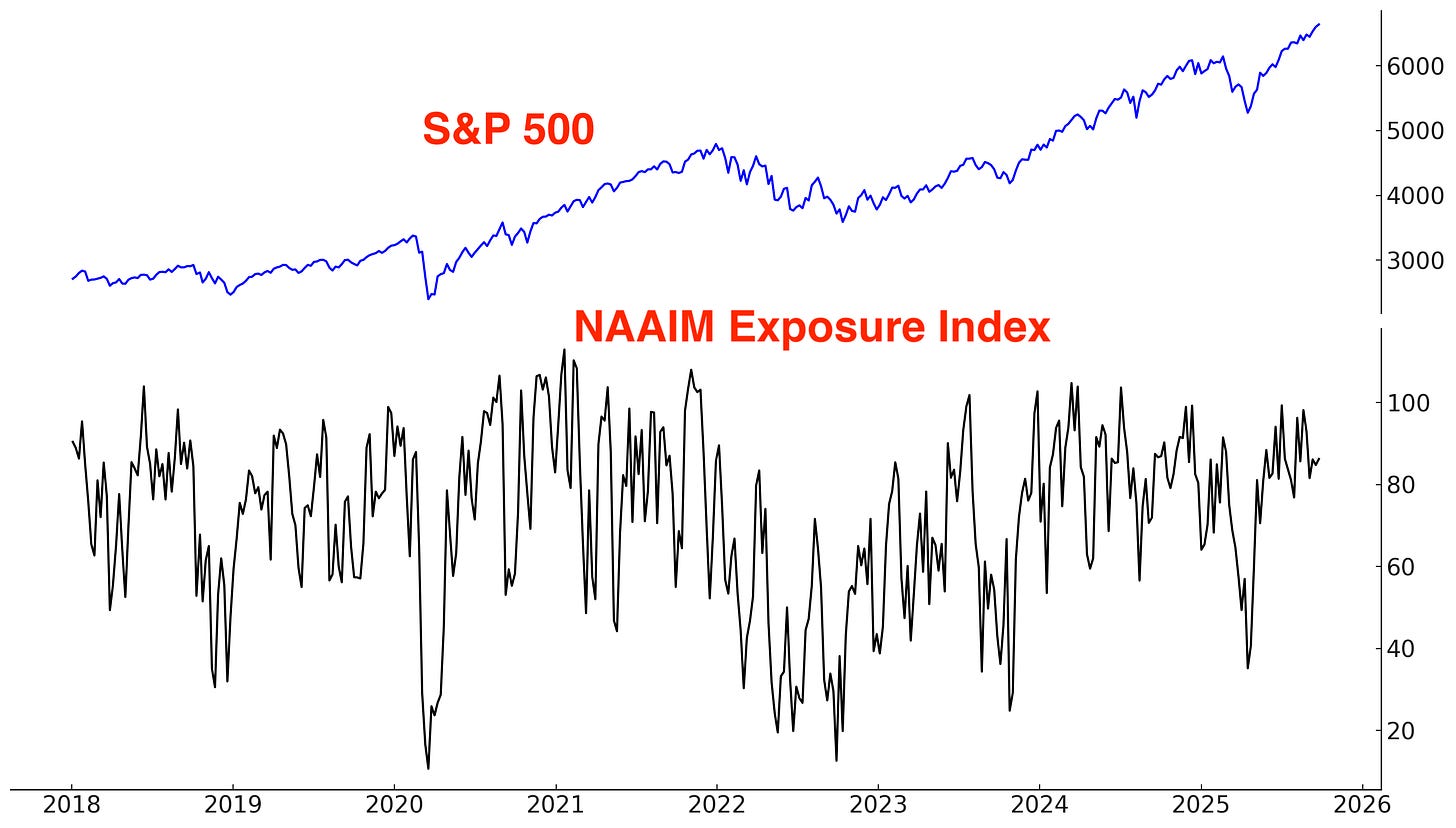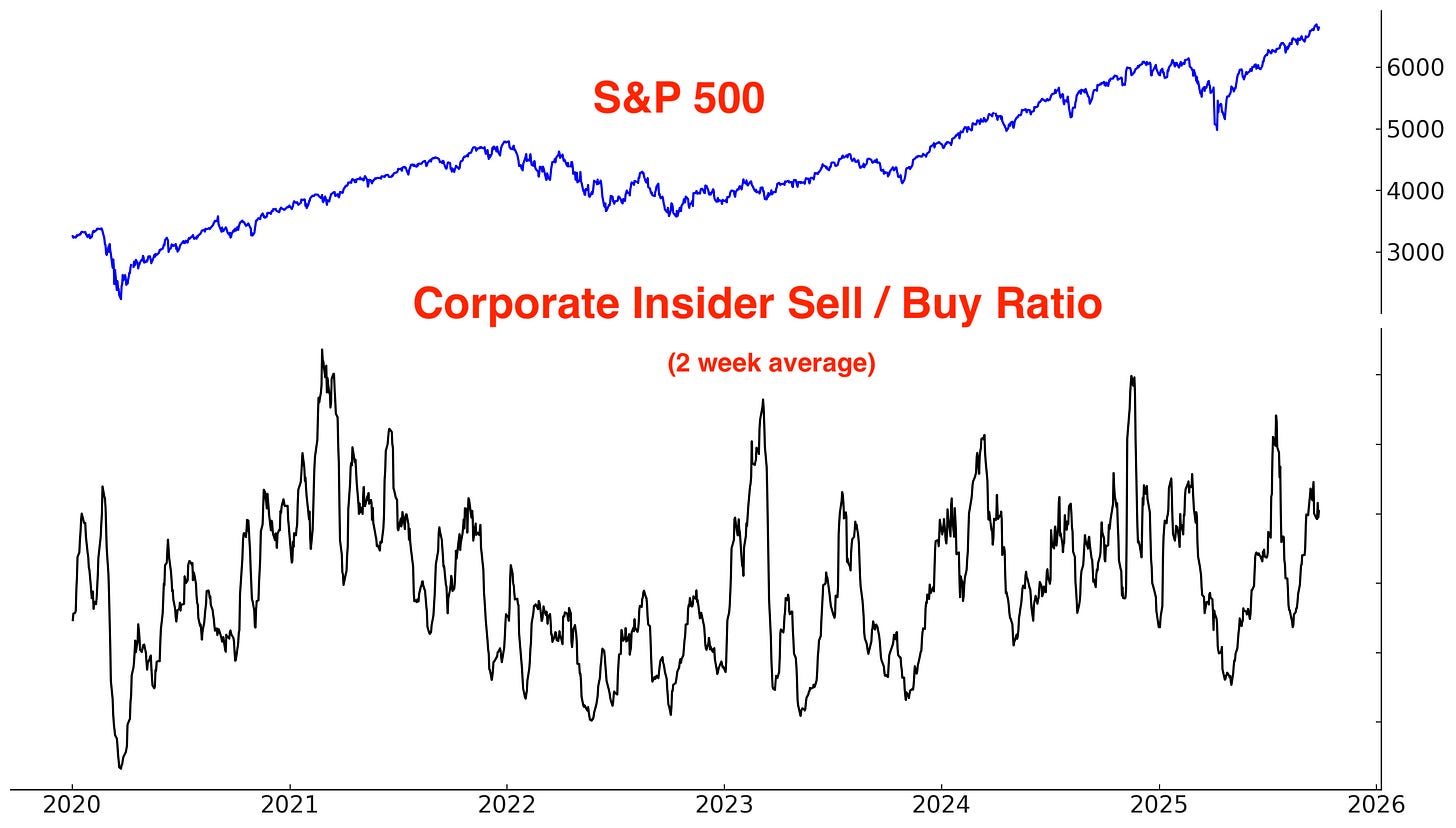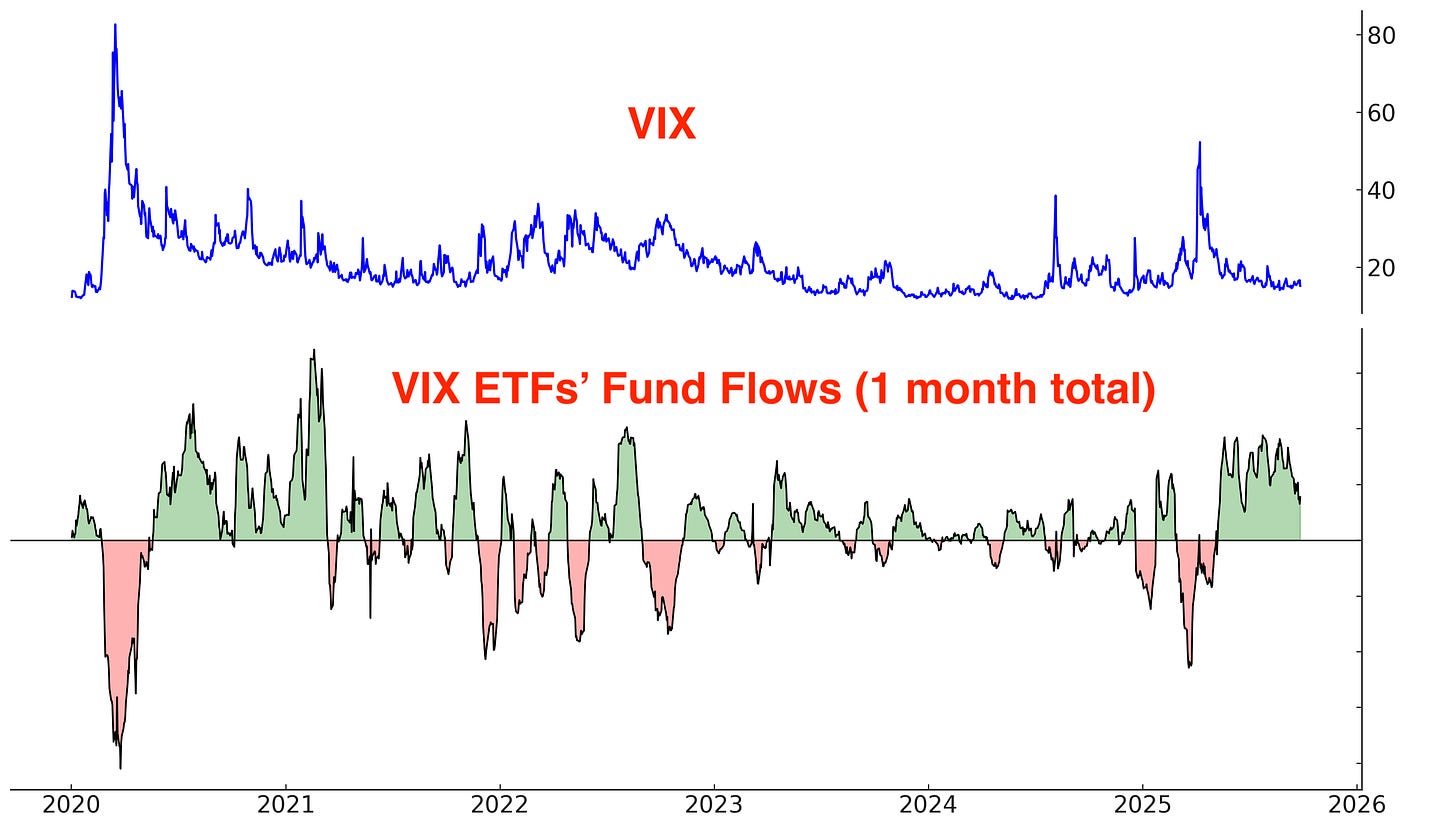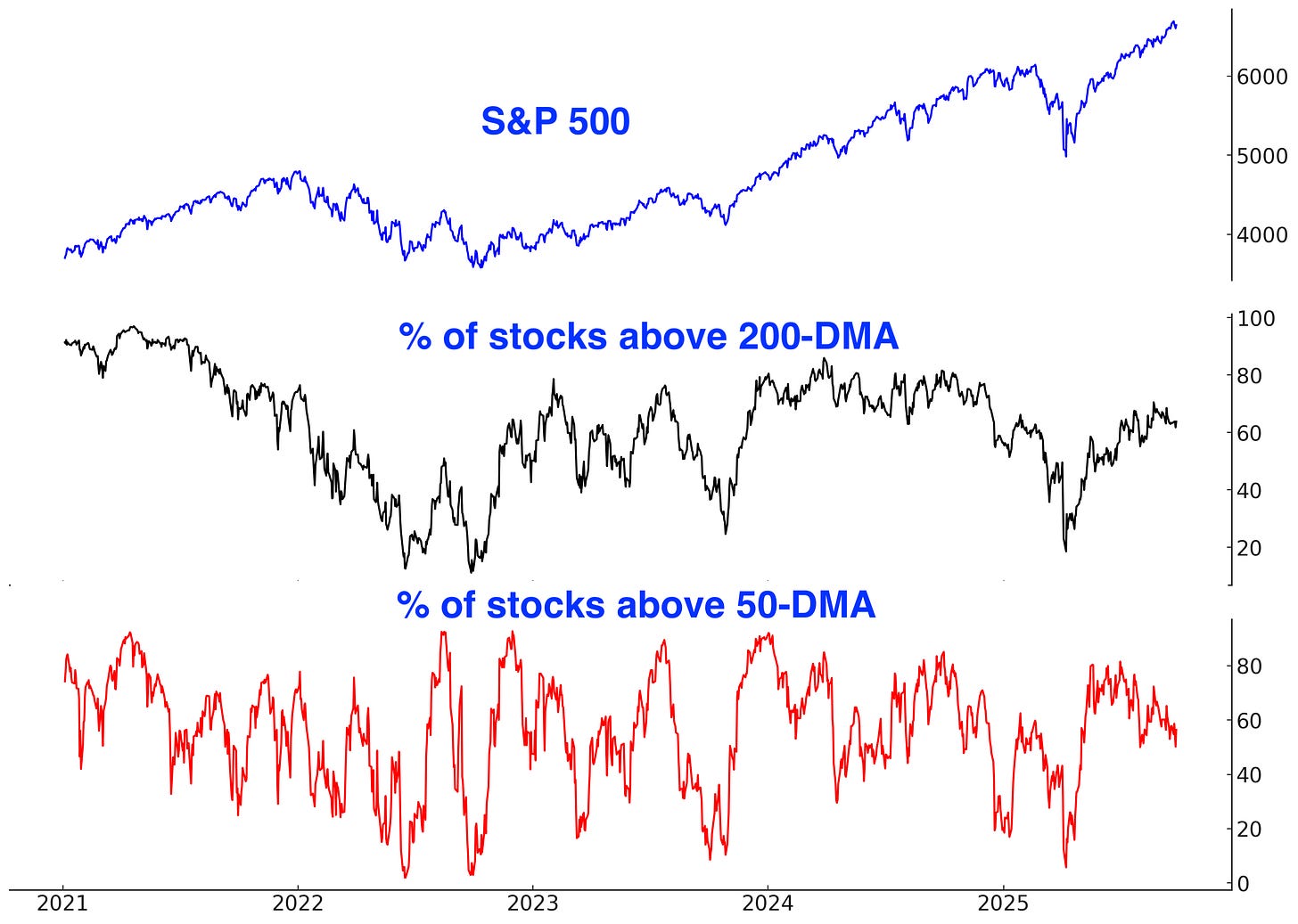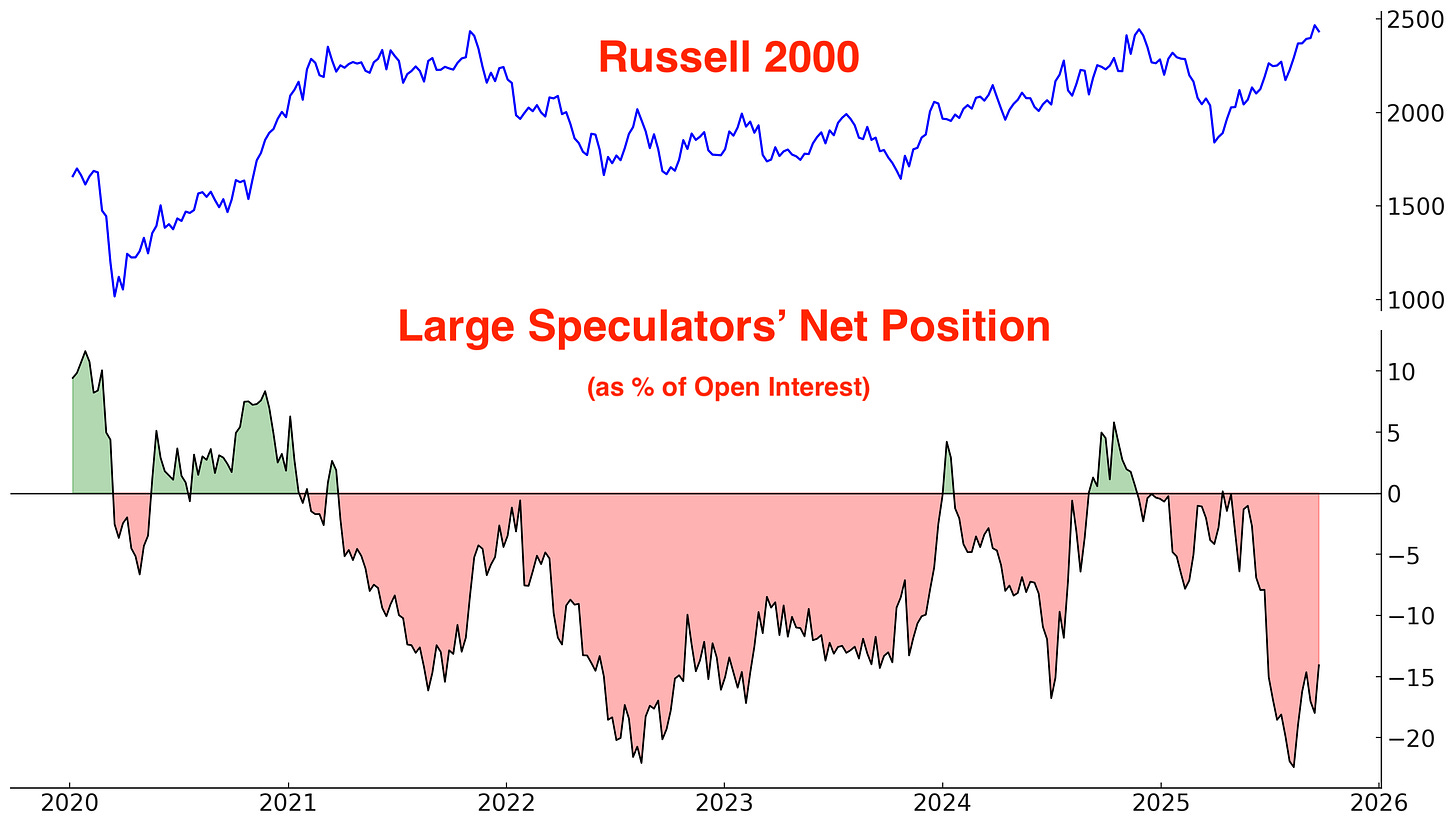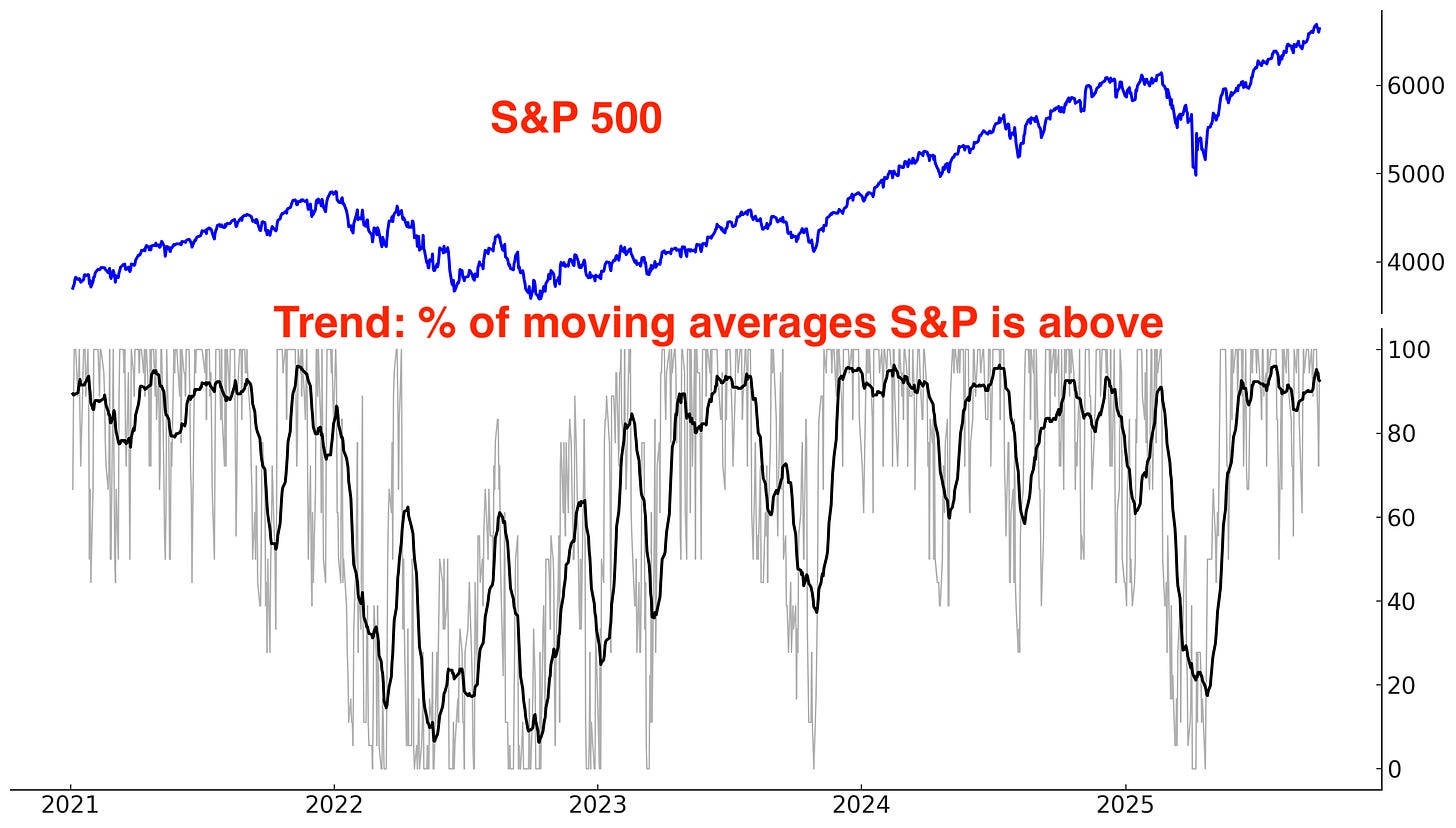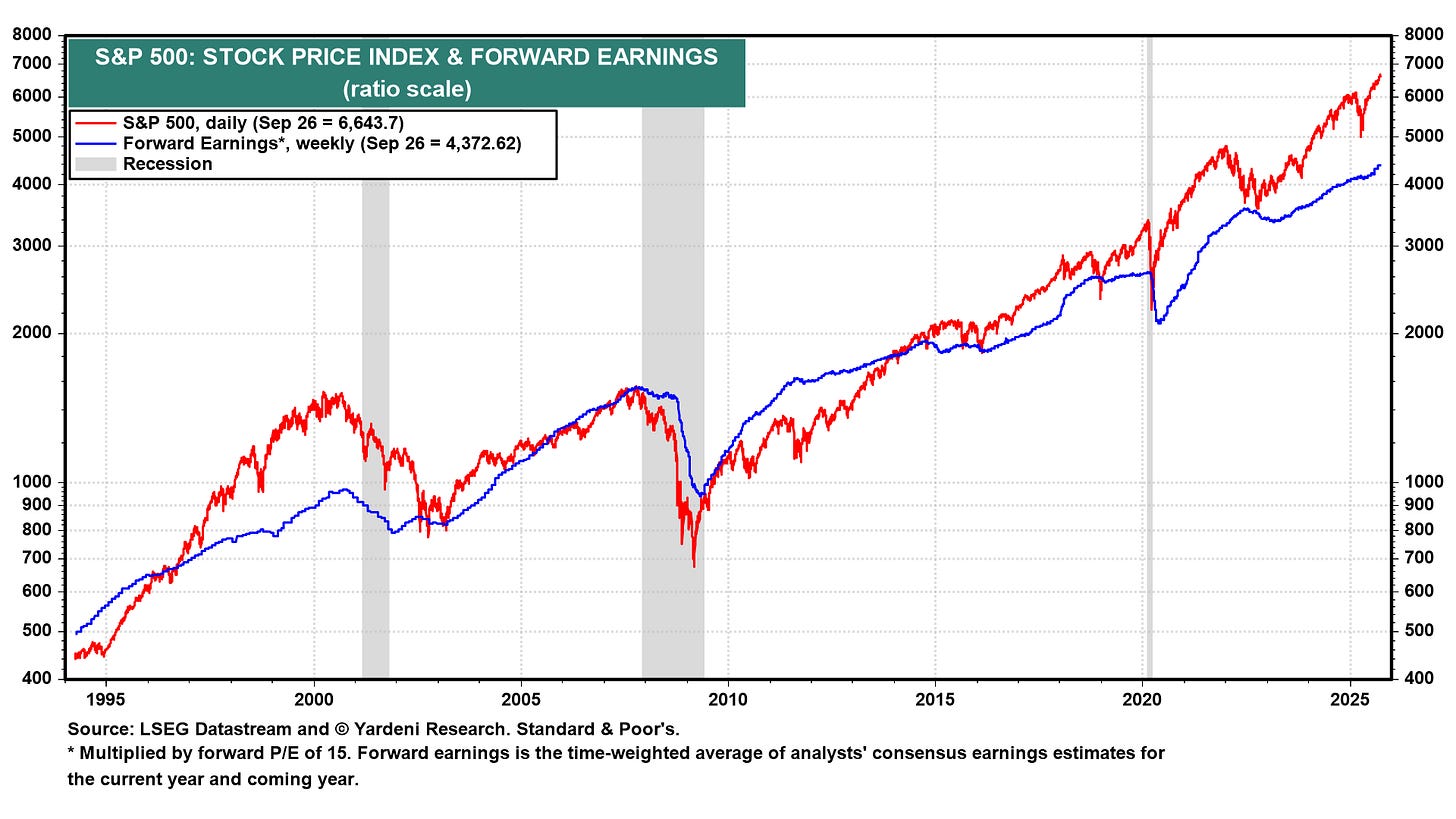Markets Report: when pullback?
Is this the start of the long-awaited pullback?
Stocks closed this week mostly flat, while precious metals zoomed higher. Predicting a small pullback within the context of a larger rally is difficult, but this could be the start of a few weeks of volatility.
Prior to this week, VIX was creeping higher while the S&P was also making new highs. In the past, this unusual combination often led to multi-week consolidations/pullbacks for stocks.
U.S. Stocks
Options
The $ value of S&P 500 Call volume - the $ value of S&P 500 Put volume is surging higher. The last time this happened was at the end of last year, before stocks plateaued ahead of this year’s crash in March/April.
This does not imply that another crash is likely; stocks arguably would not have crashed in March/April if Trump had not surprised markets with his tariffs. But this does imply that the market going forward will be more volatile, with pullbacks/corrections making a return:
The $ value of ALL call options - put options spiked to a new all-time high. This is concerning for stocks from a long term Risk/Reward perspective:
The SKEW Index, which reflects perceived tail risk in the options market — or the probability of extreme downside moves — remains muted. This suggests that any stock market pullback right now will not turn into a major crash.
Sentiment Indicators
The CNN Fear & Greed Index leans neutral:
S&P 500’s Daily Sentiment Index leans bullish:
Sentiment Surveys
Sentiment according to the AAII survey is neutral. The AAII sentiment survey has been consistently less bullish than other sentiment surveys during this rally:
According to the Investors Intelligence report, newsletter writers are increasingly bullish:
According to the NAAIM Exposure Index, active investment managers are bullish:
Corporate Insiders
The Corporate Insider Sell/Buy ratio is in neutral territory - neither bullish nor bearish.
Fund Flows
*Fund flows aren’t automatically contrarian. It depends on what type of trader is buying/selling and why. Some ETFs are traded by mean-reversion traders, while other ETFs are traded by trend followers. Moreover, many ETFs are small relative to the underlying market, so fund flows don’t always reflect broad sentiment towards that market.
VIX ETFs are traded by mean-reversion traders; they buy when VIX is low and sell (take profits) when VIX is high.
VIX ETFs have seen non-stop inflows over the past few months. These traders are betting on stocks to pullback and VIX to jump:
Breadth
Here are the % of S&P 500 stocks above their 200 and 50 day moving averages:
COT Report (Commitments of Traders)
Large Speculators are still heavily short this small caps:
Trend
The trend is your friend, until it ends. Stocks are still trending higher:
Why does trend matter? Because at least from a trend following perspective, it’s better to buy when the market is trending Up (e.g. above its 200-DMA) than when the market is trending Down (e.g. below its 200-DMA).
*There is nothing “special” about the 200 day moving average, except the fact that it’s popular. It is not significantly different from the 195, 190, 185, 180, 205, 210, 215, or 220 moving averages.
Long above vs. below the S&P 500’s 200 day moving average:
Long above vs. below the S&P 500’s 50 day moving average:
Long above vs. below the S&P 500’s 20 day moving average:
Earnings & Valuations
Some traders say that valuations and fundamentals are useless, and that “only price matters”. While this is true for day traders (valuations have zero impact on the market’s short term direction), fundamentals matter for traders and investors with longer term horizons.
Valuations for large cap stocks (S&P 500) remain elevated compared to their 10 year average:
Here’s the S&P 500’s forward earnings expectations. In the long run, earnings and stock prices move in the same direction. Earnings are still growing right now.


